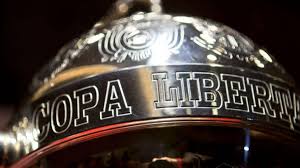By Samindra Kunti
January 24 – The revamped Copa Libertadores kicked off yesterday with qualifying across South America, but question marks remain over the tournament’s expanded new format.
Last September CONMEBOL increased the number of clubs in their flagship club competition from 38 to 42 teams. Previously, a number of clubs had threatened to withdraw from the competition due to a disagreement over prize money.
The governing body reshuffled the competition, fearing a breakaway from the clubs to form their own competition. But the decision looks to have been weighted in favour of Brazil who will now have seven representatives in this year’s Copa Libertadores: the top six in the domestic league and the winner of the Copa do Brasil.
Argentina, Chile and Colombia have also been given extra slots, but the big drawback from the tournament’s re-organisation is the withdrawal of the Mexican clubs. They cited the competition’s incompatibility with their domestic calendar and pulled out of the Copa Libertadores.
The Mexicans were first invited to take part in 1998 and have always been a competitive force in the Copa Libertadores. They also bring along a giant TV market. CONMEBOL has replaced the three Mexican teams by introducing an extra qualifying round. The Mexican spots have been distributed to Bolivia, Ecuador, Paraguay, Peru, Uruguay and Venezuela, who, after competing this week in three groups of two, will have clubs moving to the next phase of the qualifying process.
In the first legs Club Universitario defeated Wanderers Montevideo 3-2, Deportivo Capiatá edged Deportivo Táchira 1-0 and Deportivo Municipal lost 1-0 to Independiente del Valle.
The new format has lengthened the tournament. The group stages won’t get underway until March, where the structure remains the same with eight groups of four. The top two will advance to the knock out stage.
The quarter-finals will, however, not get underway until mid-September, with the round of sixteen spread out over two weeks in the summer. That may coincide with plenty of activity in the summer transfer market, and the danger of European clubs luring away the big playing talents, leaving the remaining participants in a struggle to be competitive in the business end of the tournament.
At the end of the November, after a near calendar year, the Copa Libertadores will culminate with the final. Two weeks later, the South American club season will end with the final of the Copa Sudamericana, the continent’s Europa League.
The continental season doesn’t build up to a great climax. In South America the Club World Cup is still considered the ultimate club prize and the early finish of the Copa Libertadores allows the winner to prepare in earnest for the FIFA tournament. That, like much of the revamped Copa Libertadores, may perhaps be a skewed approach.
Contact the writer of this story at moc.l1751508979labto1751508979ofdlr1751508979owedi1751508979sni@i1751508979tnuk.1751508979ardni1751508979mas1751508979

